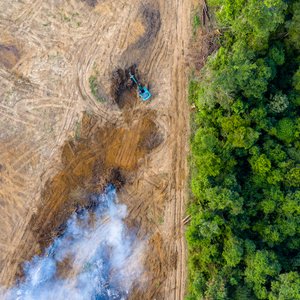One of the biggest operational challenges in increasing global aquaculture production is the strict limitations on discharge of effluent from aquaculture farms. Effluents from aquaculture farms discharged into local water bodies can result in low levels of oxygen and increased sediment and nutrient loading, potentially harming local fauna and flora.
Approximately 89 percent of all aquaculture output comes from the Asia-Pacific region with little development expected in Sub-Saharan Africa.
However, there is a tremendous potential for tilapia development in many sub-tropical and tropical areas of the world, and tilapia cultured in biofloc systems offer significant advantages.
When feeding fish with high protein feeds, approximately 70 percent of the nitrogen in the protein is expelled as waste into the surrounding culture water. Without intervention, nitrogen compounds increase to toxic concentrations, resulting in reduced growth and eventual mortality. Traditional method to reduce toxic nitrogen concentrations expel effluent typically into surrounding water bodies.
By culturing animals that feed low on the food chain such as tilapia, feed costs can be kept to a minimum. By incorporating waste nitrogen into a usable, consumable form by the culture species, two problems are solved at once and biofloc technology can accomplish this.
When solid waste is suspended in the water through aeration and mixing, diverse communities of bacteria, algae and protozoa attached to free floating detritus or residual organic matter, can thrive. This provides additional nutrition for the culture organism to feed on. Within, weeks to months depending on feed inputs, solids form into suspended, feathery aggregates, known as flocs.
Flocs vary in size, from about 50 microns in systems with aerators such as propeller aspirator pumps which shred flocs, to a few millimeters in systems with gentler aeration such as diffused air.
However, flocs contain 98.5 percent water, which presents a problem for fish that continually graze on them, to meet their metabolic requirements. Tilapia consume about 1.5 g of protein from floc per kg of fish, which amounts to about 25 percent of their protein requirement. Research studies on floc systems have shown lower protein feeds of 24 percent provide similar growth of tilapia compared to 35 percent protein feeds, indicating the contribution of protein in biofloc consumed by fish. Feed typically accounts for 40-50 percent or more of variable costs in intensive aquaculture systems.
The latest research also indicates that bioflocs can be harvested from culture systems, dried and added as an ingredient to pelleted aquaculture feeds, replacing 2/3 of fish meal and 100 percent of plant meals. However, the economic feasibility of using flocs as a dried feed ingredient remains undetermined. Increasing prices of fish meal may make dried biofloc a viable economic alternative.
Biofloc technology remains a viable alternative for eliminating effluent discharge, and increasing feed efficiency by lowering protein feed requirements for aquaculture. However, biofloc needs to be managed due to possible sedimentation creating toxic sludge, and dramatic increases in dissolved oxygen requirements due to respiration of heterotroph bacteria associated with biofloc.
Author: Dr Bill McGraw, Chiriquí, Panama, in Global Aquaculture Advocate. Read the full article here.







